CMA Outstanding Achievement
Exhibitions
This award recognizes temporary, permanent, or traveling exhibitions that effectively and distinctively contribute to increase public understanding.
Winners
- Muskoka Discovery Centre | Misko-Aki: Confluence of Cultures exhibition
- Peterborough Museum and Archives | Mnaajtood ge Mnaadendaan: Miigwewinan Michi Saagiig Kwewag Miinegoowin Gimaans Zhaganaash Aki 1860 / Honorer et Respecter : Dons des femmes Michi Saagiig au prince de Galles, 1860
- MacKenzie Art Gallery | Radical Stitch
Honourable mentions
- Art Gallery of Alberta | Second Skin
- Canada Agriculture and Food Museum: Aquaculture | Farming the Waters
- Musée McCord Stewart | Swallowing Mountains
- Musée de l’ingéniosité J. Armand Bombardier | Teens: Creative Minds
Muskoka Discovery Centre | Misko-Aki: Confluence of Cultures exhibition
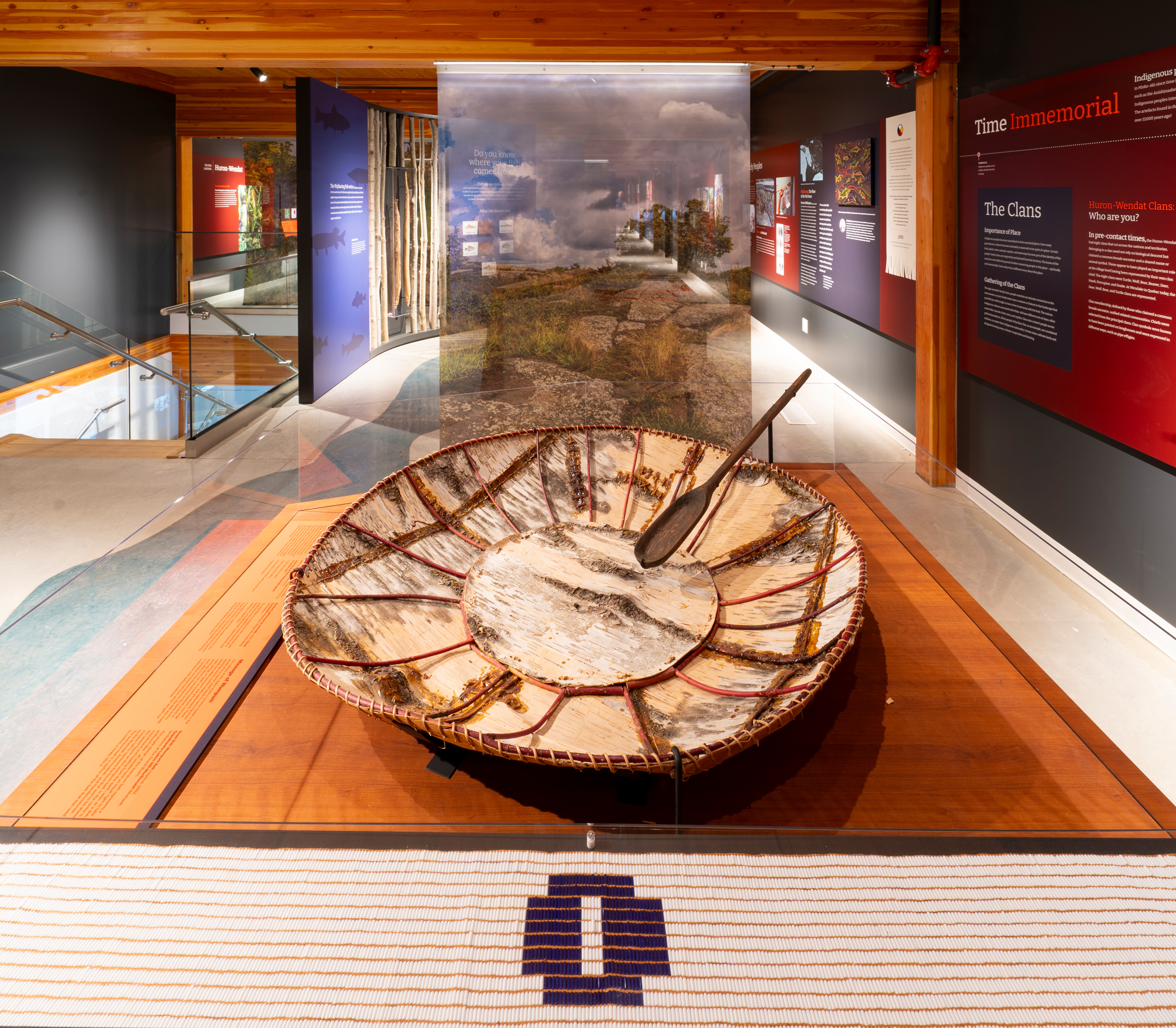
Misko-Aki: Confluence of Cultures. Photo — Muskoka Discovery Centre.
Misko-Aki: Confluence of Cultures is an amazing educational experience available to the world through both the physical exhibit in the Muskoka Discovery Centre in Gravenhurst, Ontario and the digital exhibit at ( www.miskoaki.com). The guiding principle was to feature Indigenous stories as told by Indigenous peoples under Indigenous project management. The strategic goal was to weave Indigenous culture and sustainability values into the fabric and identify of the Muskoka region. As a result, Misko-Aki represents the assembling of knowledge and information as determined by Indigenous knowledge holders and elders whose peoples traversed and inhabited the Muskoka region throughout history up to present day. Misko-Aki emerges in this era of Truth and Reconciliation as an important marker recognizing Indigenous primacy upon the land, complete with values and teachings of benefit to Indigenous and non-Indigenous communities alike within and beyond Muskoka. At the exhibit opening Lieutenant Governor of Ontario, Elizabeth Dowdeswell, commented “that vision and collaboration has been stunningly woven together in a tale that embraces Muskoka, Rama, Wahta and other First Nations across the district…”
“ Misko-Aki: Confluence of Cultures tells unknown and underrepresented stories of Indigenous peoples who lived within Muskoka for thousands of years; four culture groups and eight Indigenous nations. We are extremely proud of the community collaboration and authenticity inherent in this exhibit and thank CMA for honouring us with this award!”
— John Miller, President, Muskoka Discovery Centre
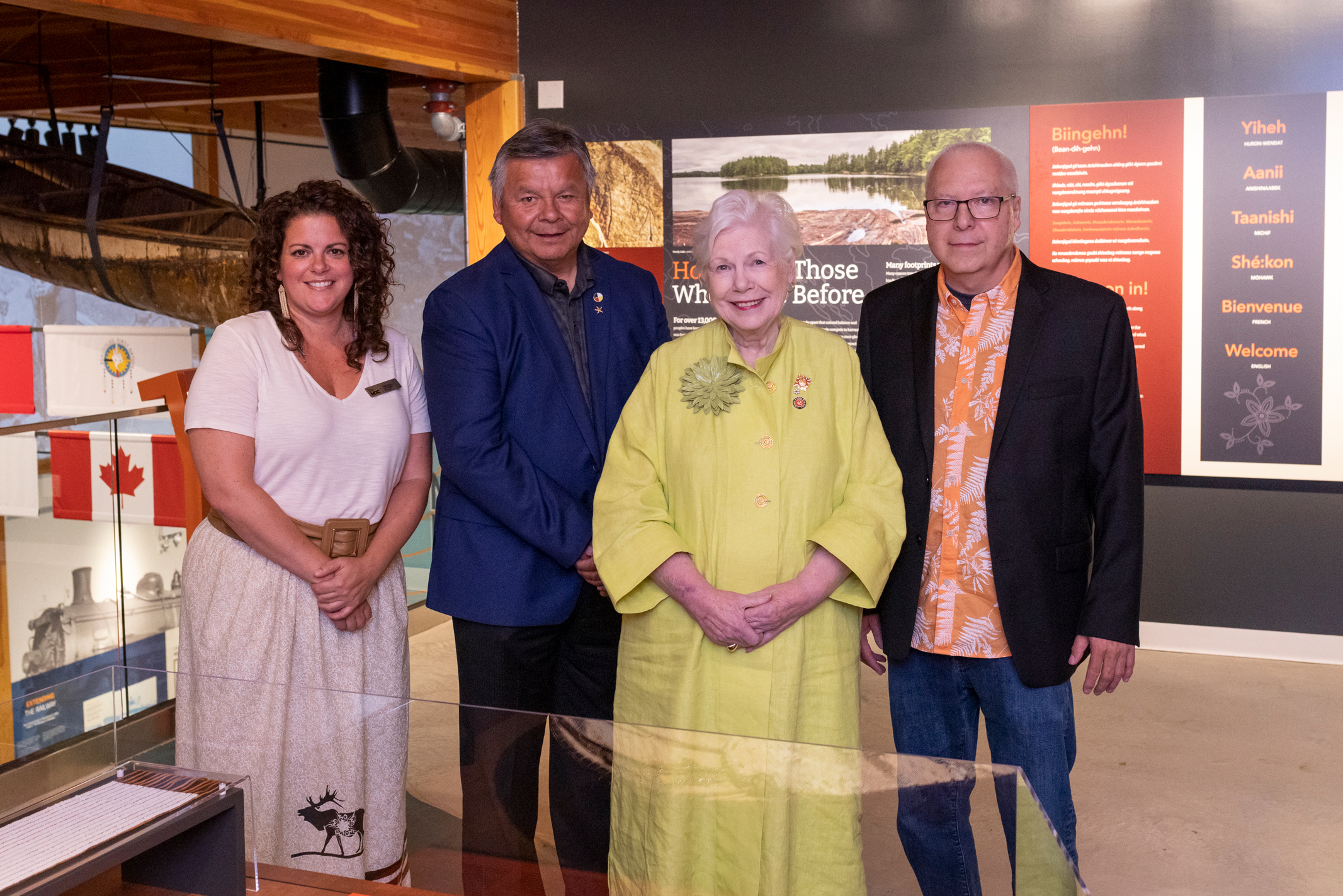
Inauguration, Misko-Aki: Confluence of Cultures. Photo — Muskoka Discovery Centre.
Peterborough Museum and Archives | Mnaajtood ge Mnaadendaan: Miigwewinan Michi Saagiig Kwewag Miinegoowin Gimaans Zhaganaash Aki 1860 / To Honour and Respect: Gifts from the Michi Saagiig Women to the Prince of Wales, 1860
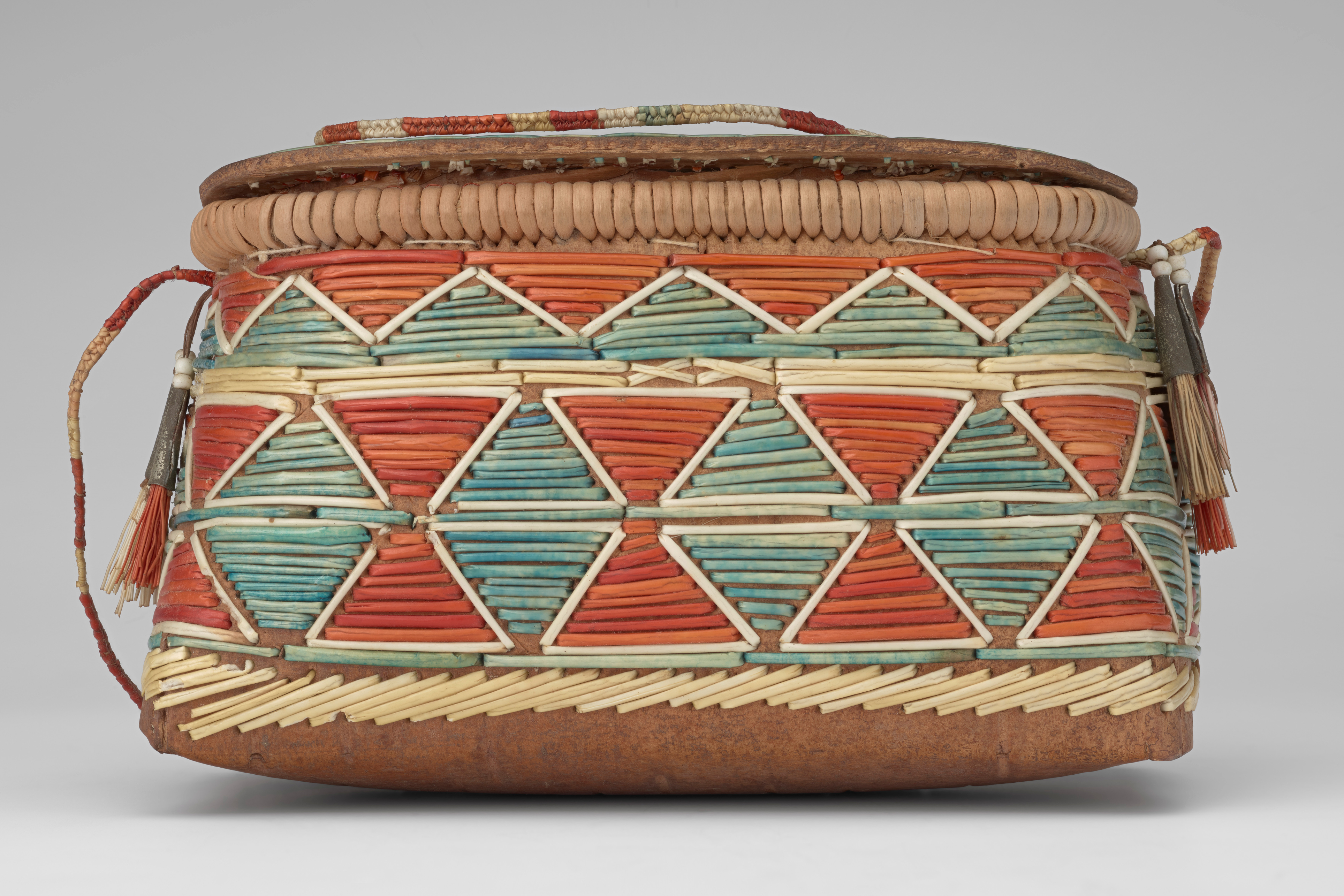
Makak by Polly Soper. Photo — Peterborough Museum and Archives.
In 1860, women of Rice Lake Village (Hiawatha First Nation), Ontario, gave 13 quilled wiigwassii makakoon (birchbark baskets) to the Prince of Wales when he visited, to honour Michi Saagiig relations with the Crown. In 2023, His Majesty The King and Royal Collection Trust lent the baskets to the Peterborough Museum & Archives (PMA) for a visit home.
To Honour and Respect: Gifts from Michi Saagiig Women to the Prince of Wales, 1860 provided the first opportunity since 1860 for Hiawatha citizens to reconnect with the makakoon and their makers, 11 of whose names remain attached to the baskets. The exhibition highlighted Michi Saagiig cultural knowledge and diplomacy, and strengthened community pride.
This was an opportunity for Royal Collection Trust staff to learn about traditional care. When the loan crate was opened, the ancestors were welcomed in Nishnaabemowin, smudged, and feasted; they were also given this care before their return.
Activities to strengthen traditional knowledge, art and language included quilling workshops; “crowd-quilling” a legacy panel; creating a specialized Nishnaabemowin vocabulary, a catalogue, a website and educational resources; Indigenous-led tours; and out-of-case handling sessions ( www.tohonourandrespect.ca).
Led by guest co-curators Dr. Lori Beavis (Hiawatha) and Dr. Laura Peers, To Honour and Respect was a partnership between Hiawatha First Nation, Mississauga Nation, PMA and the City of Peterborough, and Royal Collection Trust. Funding and in-kind support were provided by the Museum Assistance Program, Canada Council for the Arts, Ontario Arts Council, Hiawatha First Nation, Mississauga Nation, the PMA and the City of Peterborough.
“The To Honour and Respect team is thrilled to receive this award. This exhibition began with the ancestors, the women creating their makakoon in 1860--then travelling across time to our coming together as a community-led project with the Hiawatha First Nation, Mississauga Nation, Royal Collection Trust and the PMA”
— Lori Beavis (Hiawatha First Nation), Co-Curator, To Honour and Respect
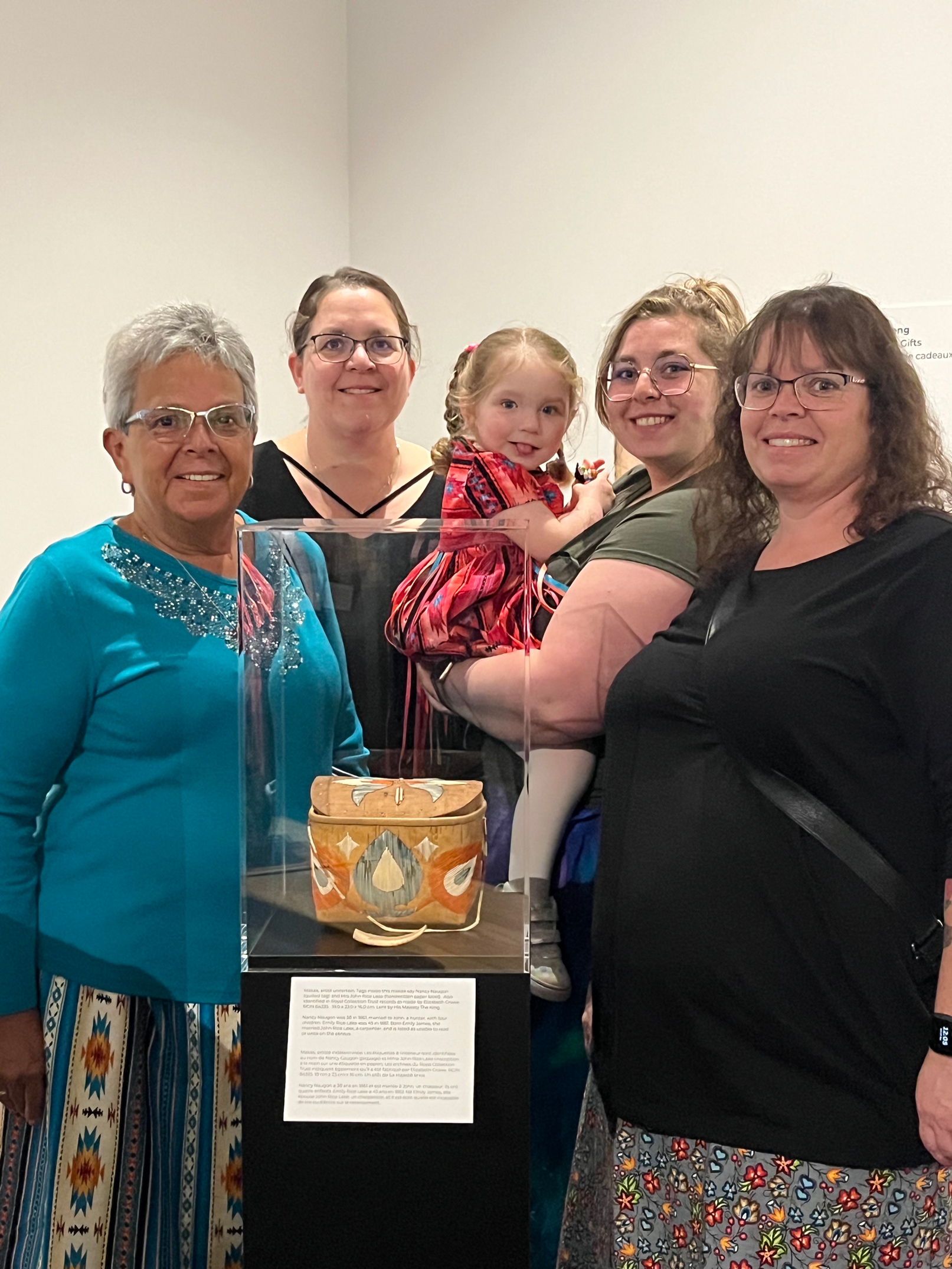
Nancy Naugon descendants. Photo — Peterborough Museum and Archives.
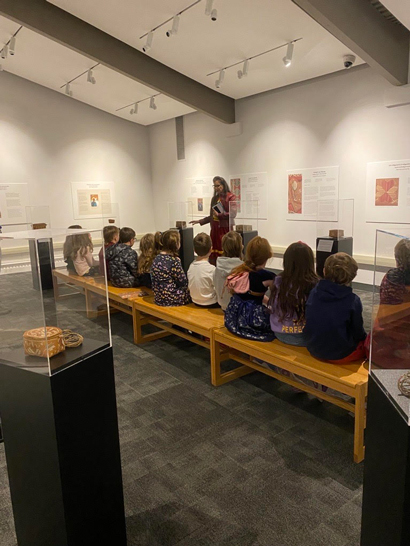
Presenting the exhibit to a group of children. Photo — Peterborough Museum and Archives.
MacKenzie Art Gallery | Radical Stitch
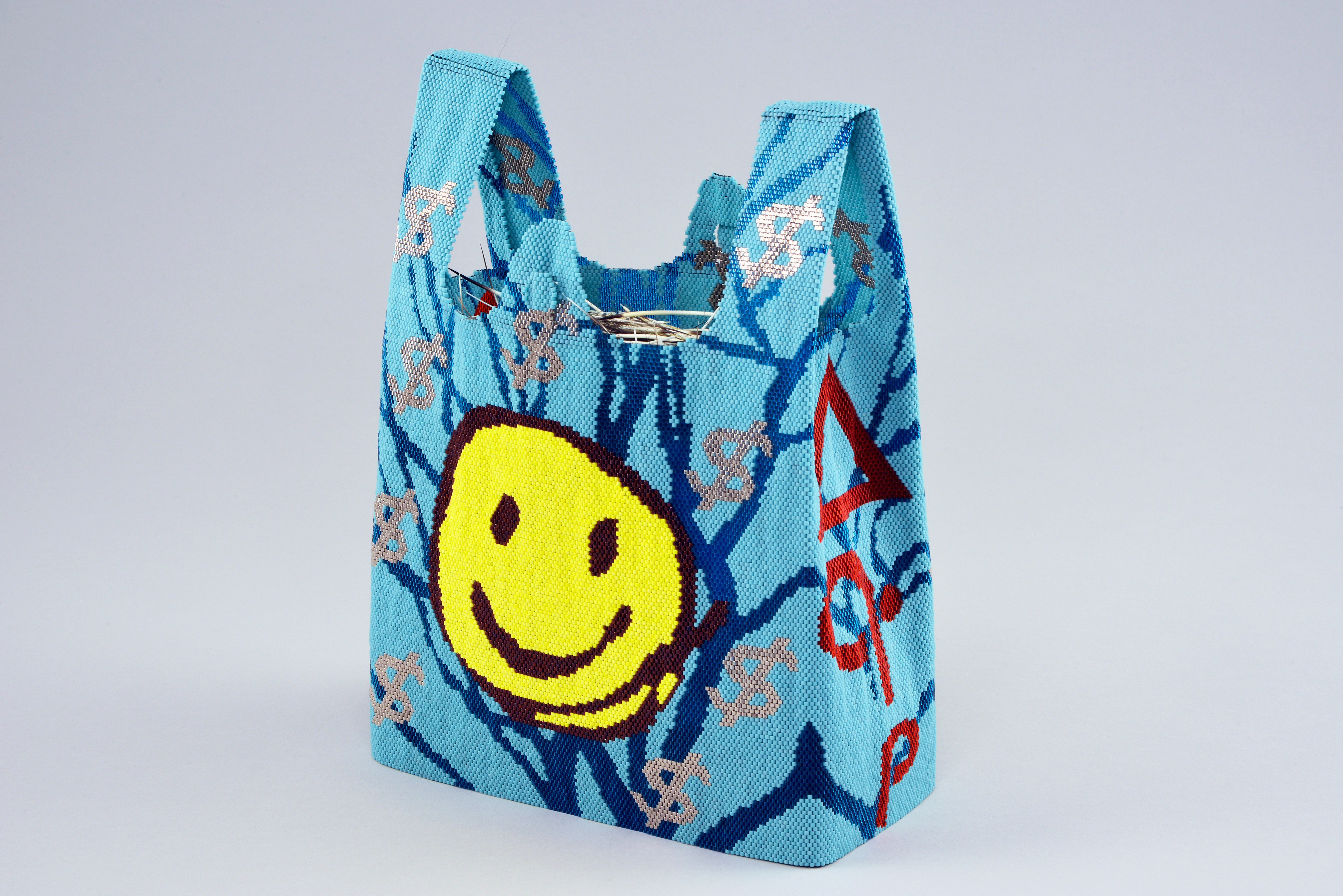
Radical Stitch. Photo — MacKenzie Art Gallery.
Connecting traditions of making, exercised over generations, Radical Stitch includes a range of work from the customary to the contemporary. Gathering respected artists from across North America/Turtle Island, this exhibition invites viewers to immerse themselves in the political, creative, and aesthetic dimensions of beadwork.
Launched at the MacKenzie Art Gallery in Regina, Saskatchewan in 2022 and currently on tour, Radical Stitch was installed across 6600 ft2 of exhibition space and featured over a hundred works by 40+ Indigenous beading artists from across Turtle Island. The exhibition was a logistical feat as it required the coordination of loans with 28 institutional lenders and 41 private lenders. A beautifully illustrated catalogue will launch in tandem with the National Gallery’s presentation of the exhibition in spring 2024.
In the words of the exhibition curators: “Since the early 19th century beads have been an important art material to Indigenous peoples across North America. Historically, beadwork was mostly done by women, who adorned clothing, baby carriers, horses and footwear with beautifully beaded mappings of the land, cosmos, and their kinship ties. They wrapped their loved ones in beaded prayers and provided for their families and communities by creating for trade and sale. More recently, many Indigenous people have been learning to bead as a way to culturally connect, and as an act of resistance to the colonial impositions that disrupted this important art practice as cultural continuance. Beadwork artists sew us into relation with one another and reflect upon the world, community, family, and life through beading.
“Collaborating with artists and curators at the forefront of contemporary Indigenous beading has been a privilege. We are deeply honoured to share this award with everyone who made this project a reality. This recognition acknowledges the profound contributions of Indigenous artists and underscores the pivotal role that intergenerational cultural dialogues play in Indigenous art legacies.”
— Crystal Mowry, Director of Programs, MacKenzie Art Gallery
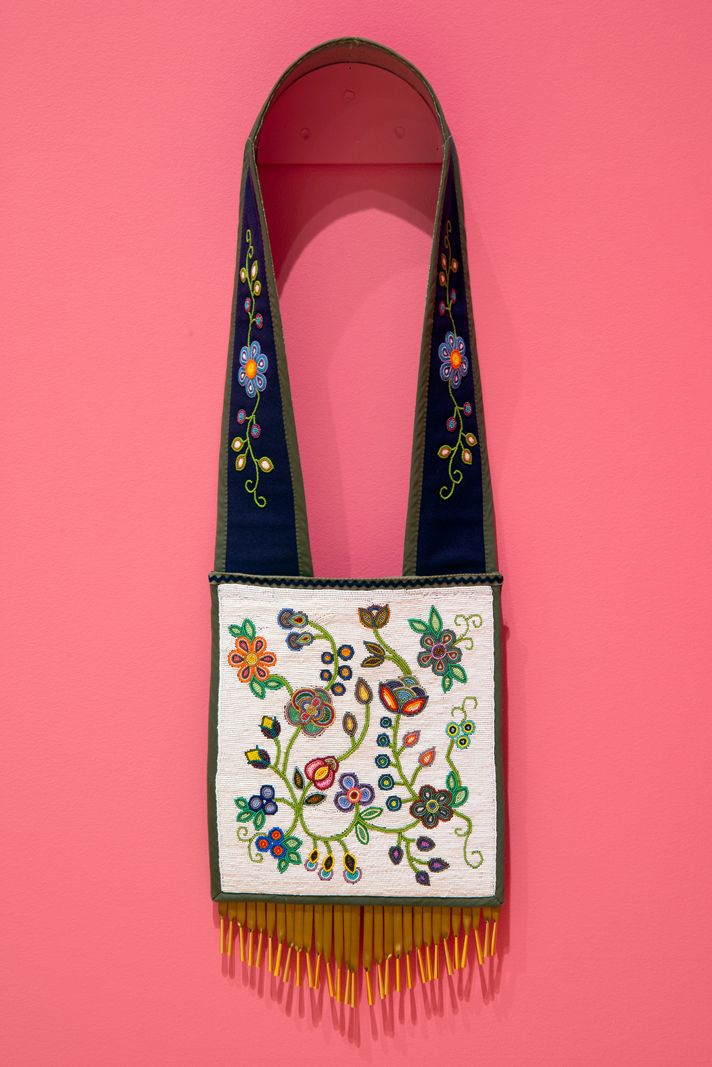
Radical Stitch. Photo — MacKenzie Art Gallery.
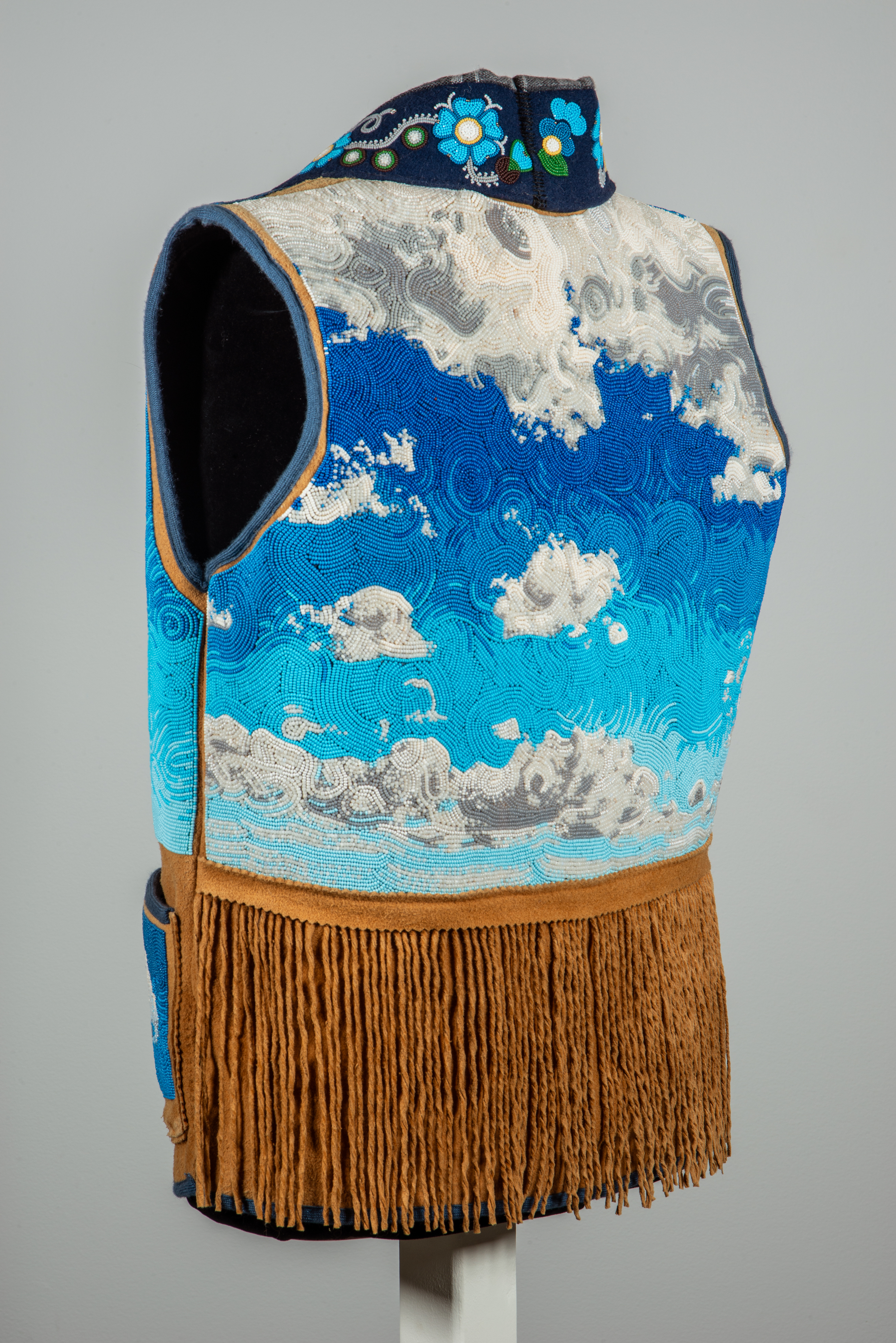
Radical Stitch. Photo — MacKenzie Art Gallery.
Honourable mentions
Art Gallery of Alberta | Second Skin
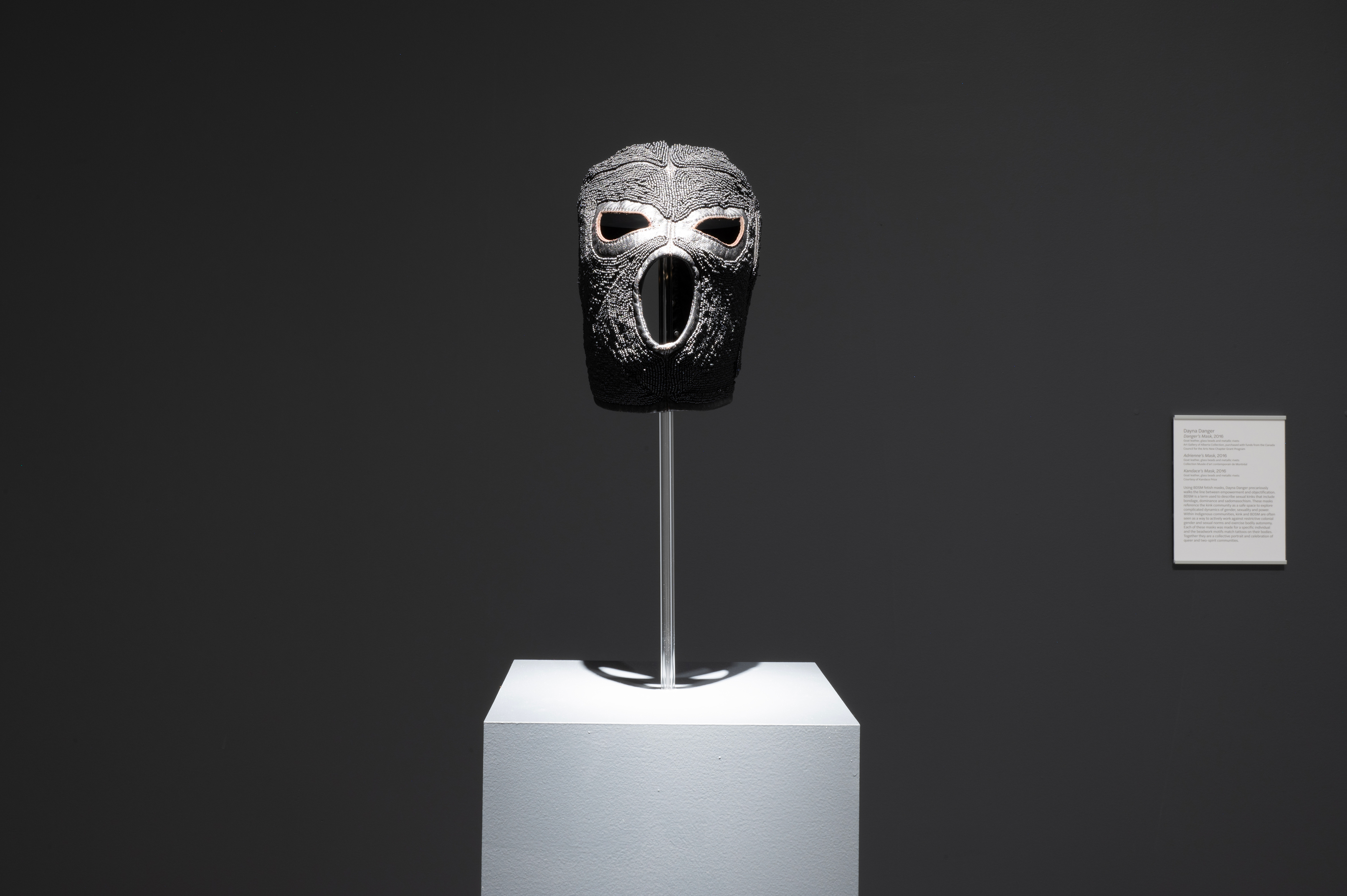
Kandace’s Mask by Dayna Danger. Photo — Charles Cousins.
Beaded, embroidered, quilted and sewn, the works in Second Skin trace the boundaries of the body, referencing garments and adornment in many forms. These literal and symbolic objects of attire allow their real or imagined wearer to explore a myriad of issues, including identity and representation; objectification and empowerment; mythology and history; imagined futures and the afterlife. These wearable and unwearable objects by Catherine Blackburn, Demetri Broxton, Nick Cave, Dayna Danger, Aganetha Dyck, Ishi Glinksy, Cannupa Hanska Luger, Karin Jones, Pamela Norrish, Elsa Robinson, Curtis Talwst Santiago, Caitlin Thompson, and Nico Williams conceal, reveal, protect, attract, restrain, and deflect, often doing more than one of these simultaniously. A uniform keeps people in and keeps people out. How can we both hide within and be protected by these garments while they simultaneously broadcast and draw attention? This exhibition explores these paradoxes to consider garments’ multiplicities.
Canada Agriculture and Food Museum: Aquaculture | Farming the Waters
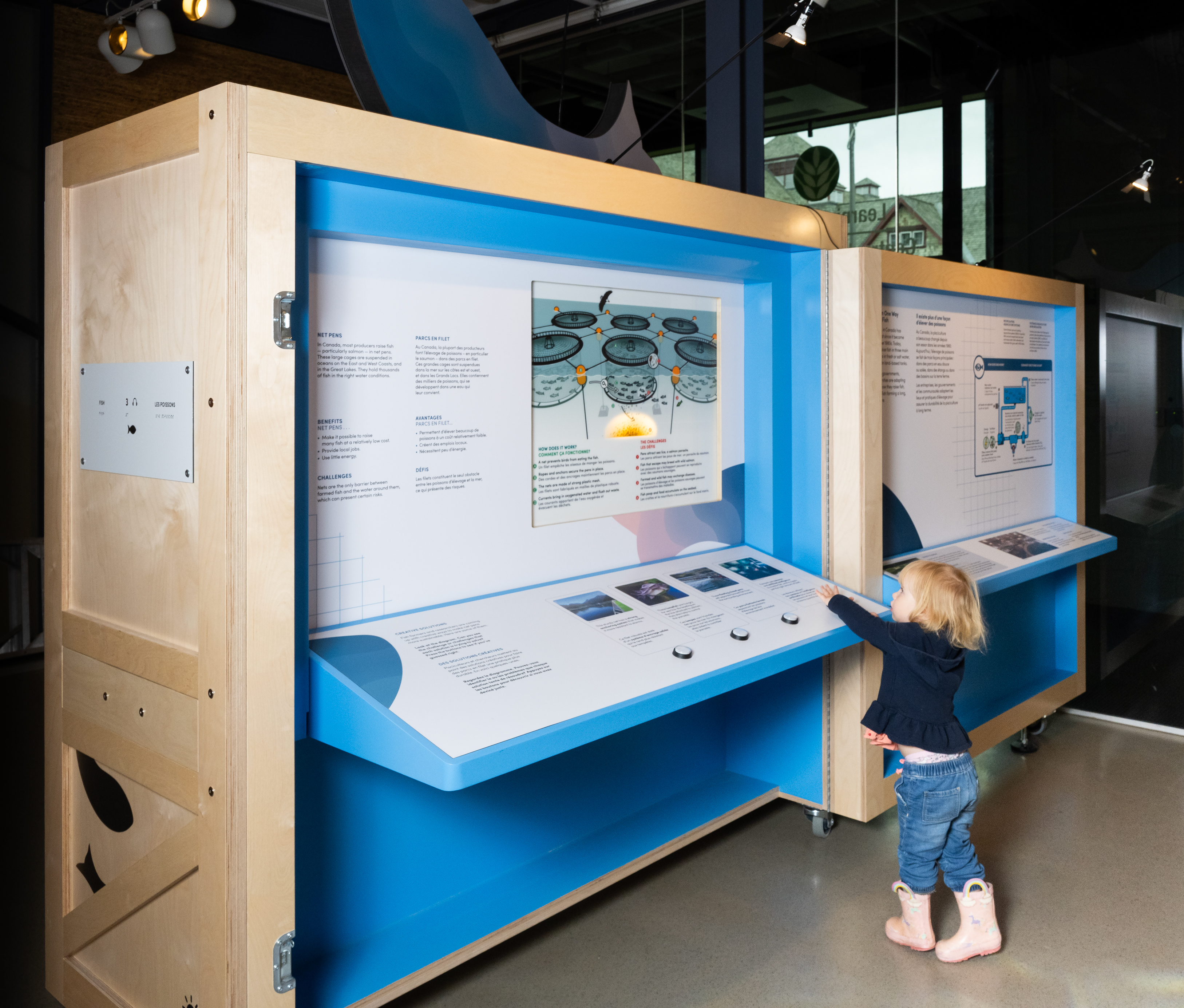
Interactive electromechanical net pen for a Fish module. Photo — Canada Agriculture and Food Museum.
Aquaculture: Farming the Waters is a fresh take on travelling exhibitions. Through consultation and testing with equity-deserving audiences, new features allow visitors of all ages and abilities to explore how fish, shellfish, and seaweed are produced in Canada. Four main sections of the exhibition encourage the visitor to explore at their own pace. The first introduces visitors to aquaculture and the concept of sustainability. The other three main sections are devoted to the farming of fish, shellfish, and seaweeds, respectively. A smaller, fifth section provides information on nutrition and the comparative sustainability of aquaculture, while a projection creates a rippling effect on the floor to immerse audiences in the feeling of flowing water. Aquaculture: Farming the Waters was developed to travel to venues that include non-traditional exhibition spaces and small venues. The exhibition has been recognized as an initiative within the United Nation’s Decade of Ocean Science for Sustainable Development.
Musée McCord Stewart | Swallowing Mountains
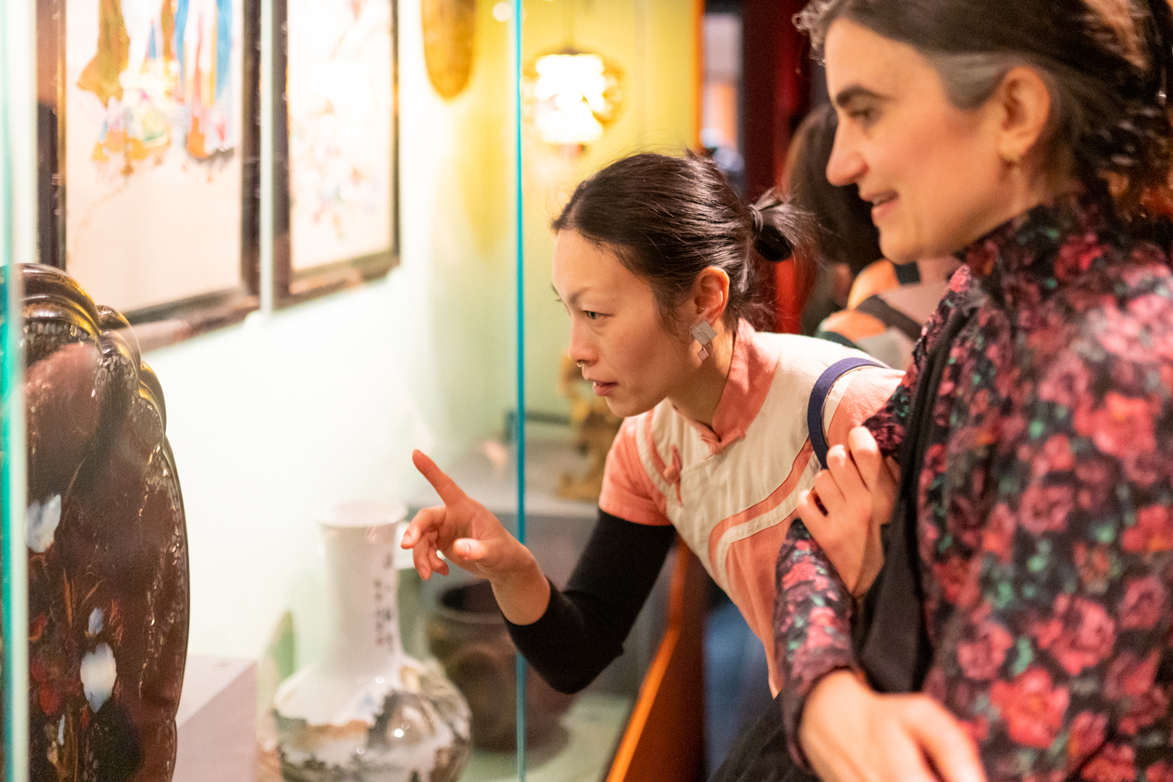
Swallowing Mountains. Photo — Musée McCord Stewart.
As part of its Artist-in-Residence program, Musée McCord Strewart presented Avaler les montagnes / Swallowing the Mountains by multidisciplinary artist Karen Tam, a tribute to the women of Montreal’s Chinatown from the 19th to the 20th century. In this immersive installation, the public was invited to discover objects drawn from the museum’s collection, works created by the artist and objects belonging to members of the Chinatown community, as well as photographs. The exhibition explores the relative silence in public archives and historical accounts of Montreal’s Chinatown women in the 19th and 20th centuries, as well as the discordance between the historical attraction to Chinese and Japanese cultural symbols, customs, and artefacts on one end, and the reality of Chinese women living in Canada since the late 19th century on the other.
Musée de l’ingéniosité J. Armand Bombardier | Teens: Creative Minds
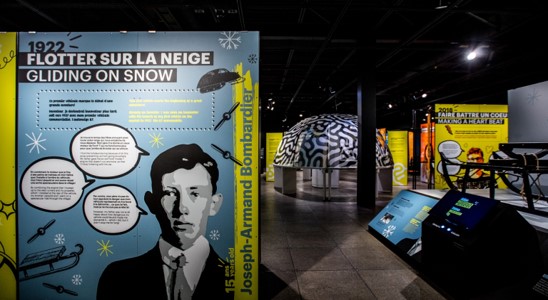
Ados : Cerveaux inventifs / Teens: Creative Minds. Photo — Musée de l’ingéniosité J. Armand Bombardier.
Teens: Creative Minds is a bilingual travelling exhibition initially presented in Valcourt, Quebec from April 8, 2022 to March 6, 2023. Convinced of the need to value and inspire teenagers, the Musée de l’ingéniosité J. Armand Bombardier wanted to design and circulate an exhibition on the creative potential of teens. Moreover, the year 2022 marked the 100th anniversary of Joseph-Armand Bombardier’s first invention. The exhibition offers an original experience. Visitors’ senses are immediately put to work. Through the exhibition, visitors are offered the opportunity to retrace the path of innovation, to test and compare prototypes, to experiment with physical principles, as well as to take part in mechanical and digital games. It popularizes brain development and the various processes that take place in adolescence and stimulates creativity and problem-solving in participants. In search of clues, they use their creativity to solve puzzles.
